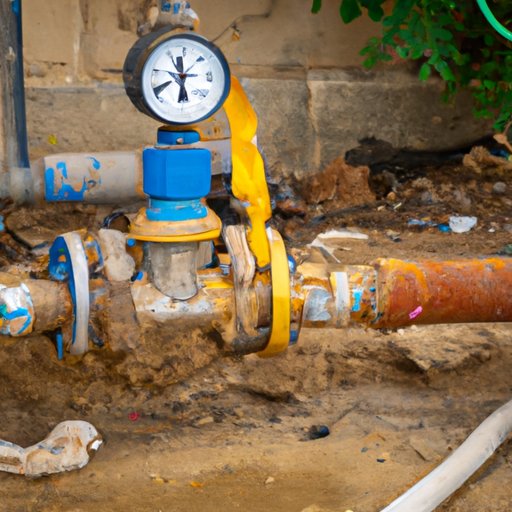
Introduction
Low water pressure is a frustrating issue that affects many households around the world. From weak showers to slow faucets, it can disrupt daily life and lead to dissatisfaction with the plumbing system. However, there are many ways to increase water pressure easily and affordably. This article will explore why water pressure is low and provide simple solutions and tips to improve water flow in your home.
Identify the Cause
The first step in addressing low water pressure is identifying the cause of the problem. Common causes include clogs or leaks in pipes, which can restrict the flow of water in your plumbing system. To address this issue, you can start by checking the pipes and cleaning out any debris that may be causing the clog. If the issue persists, consider hiring a plumber to perform a pipe inspection and cleaning. Other solutions may include adding a high-pressure showerhead or increasing the diameter of water pipes.
Install a Pressure Booster Pump
A pressure booster pump can help in increasing water pressure. It works by increasing the pressure of the incoming water to the desired pressure level, providing better water flow and stronger water pressure. Pressure booster pumps are easy to install and come in different sizes and power ratings to fit various household needs. However, it’s important to install the right size and power for your usage to ensure optimal performance.
Fix the Water Valve
A partially closed or faulty water valve could also be a cause of low water pressure. Check to ensure that the valve is opened all the way and functioning properly. If it is partially closed, open it gently and see whether the water pressure has increased. A faulty valve will need replacing, and this can be a simple DIY project or may need the assistance of a professional plumber.
Adjust the Pressure Regulator
A pressure regulator maintains a consistent water pressure level in your home. If it is not functioning correctly, it may cause low water pressure. Locate the regulator and adjust it to the ideal pressure setting. However, it’s essential to approach this task carefully, as over-adjusting the regulator may lead to damage to your plumbing system.
Check the Pressure Gauge
Checking the pressure gauge can help in identifying issues with water pressure. A pressure gauge indicates the pressure levels in the water pipes. If the gauge reads too low, it indicates that there is low water pressure. Check the gauge to see if its readings change when you turn on the faucets or shower. This can indicate a problem that needs to be fixed to improve water pressure.
Consider Replacing Old Plumbing
Old or corroded plumbing pipes can reduce water flow and pressure. Investing in new plumbing can improve water pressure in the long run and increase the value of your home. Older pipes may corrode, leading to rust and mineral buildup, which can cause low water pressure. Replacing them can provide better water flow and an overall improvement in the plumbing system.
Conclusion
In conclusion, low water pressure can be a frustrating issue for many households. However, there are many solutions to increase water pressure, such as installing a pressure booster pump, fixing water valves and regulators, and checking the pressure gauge. It’s essential to identify the cause first before taking action to improve water flow and pressure. These simple tips and tricks can make a significant difference in your daily life and ensure that you enjoy better water flow and pressure in your home.




